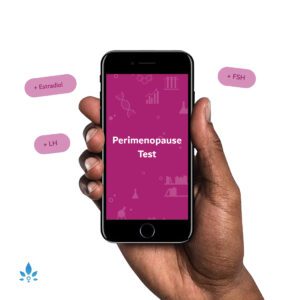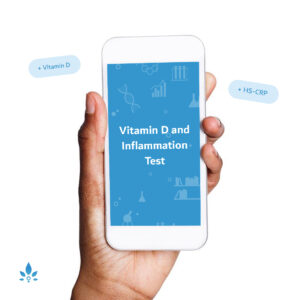- Osteoporosis has a direct link with menopause as women lose as much as 20% of their bone density after menopause.
- Osteoporosis is a disease that makes bone tissue less strong.
- Lifestyle changes can reduce some risk factors associated with osteoporosis.
- There are genetic factors that also impact the risk of getting osteoporosis after menopause.
What’s the connection between osteoporosis and menopause, and how can you protect your bones in midlife? Here’s our guide…
What do you think of when you hear the word ‘osteoporosis’? You might have an image of a frail elderly person with weakened bones that break easily. While many older people do suffer from osteoporosis, changes in our bone strength start far earlier in life that most of us realise – in our late thirties.
Furthermore, for women, that strength diminishes even more rapidly once we are the other side of menopause; according to the
NHS, women lose 20% of their bone density in the five to seven years after
menopause. We wanted to know why this happens and what we can do to protect our bones as we move into and beyond menopause.
What causes osteoporosis?
Osteoporosis is now a global disease that affects an estimated 200 million people worldwide. It is all down to bone density (the amount of bone tissue that your body makes and repairs) and how strong that bone tissue is. While there are some things (known as risk factors) that you can control or change to support your bone health, there are other factors that you cannot change. As the
Royal Osteoporosis Society explains, the risk factors that you can do something about are:
- Low body weight – less bone tissue and, when you’re older, less body padding to cushion falls.
- Smoking.
- Excessive alcohol consumption.
- Frequent falls caused by poor coordination and balance – check for any underlying health issues.
The things that you can’t change are:
- Genes – if you have a family history of osteoporosis.
- Age – bone strength decreases as we get older and we are more likely to have falls.
- Being female – oestrogen levels, which support bone strength, drop during and after menopause.
- Asian or Caucasian heritage – you are less at risk of broken bones if you are of Afro-Caribbean heritage.
- Broken bones or fractures in the past – just one break increases your risk of having more in the future.
Medication, such as aromatase inhibitors used to treat some types of breast cancer, can affect bone strength too. You can find a full list
here on the Royal Osteoporosis Society website.
Chemotherapy may have a similar effect and if your breast cancer is hormone related, you will probably have regular
DEXA (Dual-energy X-ray absorptiometry) scans (see below) to monitor any changes in your bone density.
How is osteoporosis diagnosed?
If your doctor thinks that you are at risk of osteoporosis, they will arrange for you to have a special type of x-ray, known as a DEXA scan, to measure your bone density.
If you are given a diagnosis of osteoporosis, it means that your bones could break easily; if you are diagnosed with
osteopenia, your bones are weaker than normal but not yet at such high risk of breaking.
What happens if I have osteoporosis or osteopenia?
If you are diagnosed with either condition, your GP will recommend medication, such as bisphosphonate tablets, to strengthen your bones. You can read more about different types of treatment, including benefits and risks,
here.
What can I do to support my bone health during perimenopause, menopause and beyond?
It’s a good idea to put a bone health and strength protection plan in place as you move towards and into menopause. Even if you have already been diagnosed with osteoporosis or osteopenia, there are things to avoid and things you can do that can make a difference.
Stop smoking
Ask your doctor for help with this if you are finding it difficult to stop.
Watch your alcohol intake
Avoid binge drinking and don’t exceed current guidelines of 14 units a week. If you are in the habit of drinking daily, try to have one or two alcohol-free days each week. Better still, think of alcohol like cake – something best kept for special occasions!
Partake in regular exercise
Include weight-bearing and resistance exercises and don’t forget that brisk walking is excellent exercise too.
Yoga and Pilates can help with coordination, balance and flexibility, and Pilates develops core strength, which supports your entire body.
Eat a healthy, balanced diet and aim for a healthy (but not too low) BMI
Make sure you eat plenty of calcium-rich foods including dried fruit, green vegetables, tofu and yogurt.
For help with healthy eating during menopause, we recommend
The Midlife Kitchen: Health-boosting Recipes for Midlife & Beyond by Mimi Spencer and Sam Rice.
What’s the connection between Vitamin D and osteoporosis?
Despite the name,
Vitamin D is actually a hormone and is vital for bone strength and health. A daily dose of sunshine is great, but in countries with exceptionally hot daytime temperatures and in cooler countries with fewer sunny days, it is very difficult to get enough
Vitamin D, especially in its crucial form of cholecalciferol (Vitamin D3), from sunshine alone. Try to include these Vitamin D-rich foods in your diet: egg yolks, fortified breakfast cereals (but avoid any with high sugar levels), fortified plant milks such as almond, liver, mushrooms, red meat (two portions a week but avoid smoked meats), oily fish such as sardines and tofu.
Think about a Vitamin D supplement – even if you are able to get out into the sunshine regularly and you are eating well, your Vitamin D levels still might not be at the optimum level. A daily dose of Vitamin D supplement of at least 10 micrograms (that’s 400 IU – International Units) can sufficiently boost levels. Some experts recommend combining Vitamin D supplements with Vitamin K2 supplements, but you should always check with a healthcare professional before starting any supplements.
You can test your Vitamin D levels affordably and discreetly at home by booking a
blood test with Nabta Health.
Where can I find out more about osteoporosis?
The
Royal Osteoporosis Society (formerly the National Osteoporosis Society) is an excellent resource. The society offers information, advice and support on all aspects of osteoporosis, including treatment and prevention, focusing on exercise and diet.
This article was originally written and published by our partner
Live Better With.
Live Better With’s mission is to make everyday living a bit better for the millions of people living with long term health conditions, all over the world. We do this through thousands of curated products, informative content, useful services and a thriving online community. Visit Live Better With
here.
Nabta is reshaping women’s healthcare. We support women with their personal health journeys, from everyday wellbeing to the uniquely female experiences of fertility, pregnancy, and menopause.
Get in
touch if you have any questions about this article or any aspect of women’s health. We’re here for you.















































